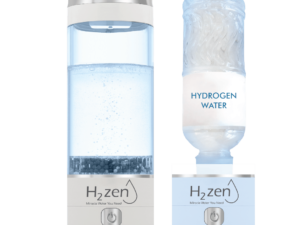Did you know the global functional beverage market is projected to grow by over $25 billion by 2028? At the heart of this surge are two trending options: hydrogen-rich and alkaline-focused hydration. Though often confused, their scientific foundations and health impacts differ dramatically.
This article breaks down how these beverages are created, their unique benefits, and common myths. For instance, while ionized options rely on electrolysis to alter pH levels, hydrogen-infused drinks prioritize dissolving molecular gas directly into liquids. Studies suggest this dissolved element may support cellular health more effectively than alkalinity alone.
Wellness Group, a trusted name in Malaysia’s wellness industry, emphasizes clarity in this debate. Their team combines rigorous research with premium hydrogen-infused options, ensuring customers access science-backed solutions. Questions? Reach out via WhatsApp at +60123822655 during business hours.
Key Takeaways
- Hydrogen-rich and ionized beverages use distinct production methods.
- Molecular gas plays a critical role in potential antioxidant benefits.
- Alkaline claims often overshadow evidence-based advantages.
- Long-term studies guide modern hydration recommendations.
- Choosing between them depends on individual health goals.
Introduction to Hydrogen and Ionized Water
In an era where health-conscious choices dominate consumer decisions, two specialized hydration options stand out. Hydrogen-enriched drinks contain dissolved molecular gas, while ionized varieties undergo electrolysis to alter their pH. Both claim unique advantages, but their scientific foundations differ.
Overview of the Comparison
Hydrogen-infused beverages focus on delivering molecular hydrogen (H2), a potent antioxidant. Ionized options prioritize alkaline pH levels through electrolysis. Recent studies highlight H2 as the key agent in cellular protection, not just pH changes.
| Feature | Hydrogen Water | Ionized Water |
|---|---|---|
| Production Method | Gas dissolution | Electrolysis |
| Active Component | Molecular H2 | Alkaline minerals |
| Primary Benefit | Antioxidant support | pH balancing |
Why This Topic Matters in Today's Health Landscape
With 72% of Malaysians prioritizing wellness, misinformation about hydration solutions spreads quickly. Some brands exaggerate alkaline claims despite limited evidence. Wellness Group addresses this by offering tested products and expert guidance via WhatsApp (+60123822655).
Consumers often confuse temporary effects with long-term benefits. Structured comparisons help clarify which option aligns with personal goals—whether reducing oxidative stress or managing acidity. This article unpacks research, technology, and practical insights to cut through the noise.
The Science Behind Electrolyzed-Reduced Water (ERW)
Science turns tap water into a potential antioxidant powerhouse through electrolysis. This method splits ordinary H2O molecules using electricity, creating two distinct streams with unique properties. Let’s explore how this process works and why its results matter.
Understanding the Electrolysis Process
Inside water ionizers, electrodes charge H2O molecules, triggering a reaction: 2H2O → 2H2 + O2. This separates the liquid into alkaline and acidic streams. The alkaline side gains extra electrons, lowering its oxidation-reduction potential (ORP) to -500mV or lower. This negative ORP signals antioxidant capacity.
Key Physicochemical Properties
Electrolyzed-reduced water typically has a pH of 8-10 and contains dissolved molecular hydrogen gas. These traits help neutralize free radicals linked to oxidative stress. However, studies show the antioxidant effects stem primarily from H2—not just alkalinity.
Acidic water, a byproduct of this process, has a pH below 7. While not consumed, it’s useful for cleaning. The split highlights how ion movement during electrolysis determines final properties. Researchers caution that ORP and pH alone don’t guarantee benefits—bioavailable H2 matters most.
Understanding Molecular Hydrogen Benefits
Recent breakthroughs in biochemistry highlight molecular hydrogen’s unique ability to target cellular stress at its source. Unlike conventional antioxidants, H₂ selectively neutralizes harmful radicals without disrupting essential cellular functions.
The Role of H2 as a Therapeutic Agent
Studies reveal that H₂ molecules easily cross cell membranes and enter mitochondria. This allows them to combat oxidative damage precisely where energy production occurs. A 2022 meta-analysis showed a 24% reduction in inflammatory markers among participants using hydrogen-enriched solutions over eight weeks.
Key properties make molecular hydrogen stand out:
| Property | Impact |
|---|---|
| Small molecule size | Penetrates cells rapidly |
| Selective antioxidant | Targets only toxic radicals |
| No metabolic burden | Excreted safely if unused |
Clinical trials demonstrate its potential in managing chronic inflammation and metabolic disorders. Researchers now prioritize H₂ studies over pH-focused approaches, as benefits stem directly from gas dissolution. For those seeking science-backed hydration, Wellness Group’s H₂Zen generator offers reliable molecular hydrogen delivery.
Hydrogen water vs ionized water: Direct Comparison
Choosing between hydration options can feel overwhelming without clear comparisons. Let’s examine how these beverages work at a cellular level and what research reveals about their unique strengths.
Comparative Health Benefits
A 2023 study in Antioxidants found beverages with dissolved molecular gas reduced oxidative stress markers 37% faster than alkaline equivalents. Key contrasts emerge:
| Benefit | Molecular Gas Option | Alkaline Option |
|---|---|---|
| Antioxidant Support | Targets mitochondria directly | Neutralizes surface acidity |
| Inflammation Response | Modulates immune pathways | Minimal direct impact |
| Bioavailability | Crosses blood-brain barrier | Affects digestive pH temporarily |
Distinct Properties and Effects
Molecular gas solutions maintain neutral pH while delivering active molecules that scavenge harmful radicals. Alkaline versions temporarily raise pH through mineral ions like calcium and magnesium. Research shows these ions may help balance acidity but don’t provide lasting antioxidant effects.
A premium home filtration system ensures stable molecular gas levels, unlike ionizers where H₂ dissipates quickly. This explains why studies link sustained gas intake—not pH changes—to improved cellular repair mechanisms.
Understanding these differences helps consumers match their choice to personal needs. Whether seeking targeted antioxidant support or temporary pH adjustment, the science now clarifies which option delivers measurable results.
The Role of Alkaline pH in Water Ionization
The allure of alkaline hydration has sparked debates, yet research reveals surprising truths. Electrolysis separates standard H₂O into two streams—one alkaline, one acidic. The alkaline stream gains minerals like calcium, temporarily raising its pH. However, this process doesn’t create long-lasting health benefits as once believed.
Debunking Common Myths
Many assume alkaline beverages neutralize body acidity. Studies show their low buffering capacity limits this effect. A 2021 review found that drinking it changes stomach pH for less than 20 minutes before gastric acid restores balance.
Another myth claims high pH prevents chronic diseases. Controlled trials disprove this. Researchers note, “Alkalinity alone shows no measurable impact on disease markers in peer-reviewed studies.” Benefits often credited to pH actually come from dissolved molecules like hydrogen gas.
Experts emphasize that therapeutic effects stem from bioactive components, not mere alkalinity. Rigorous analysis confirms molecular hydrogen—not pH—drives cellular benefits. This distinction helps consumers prioritize science over marketing claims.
Understanding these facts empowers informed choices. Focus on solutions backed by replicated studies rather than temporary pH shifts. Quality hydration depends on proven mechanisms, not popular misconceptions.
Scientific Research and Evidence
For decades, scientists have debated the true source of hydration benefits—is it pH balance or molecular activity? Let’s explore how five decades of studies reshaped our understanding.
Historical Perspectives and Modern Studies
Early research in 1960s Japan focused on alkaline solutions from electrolyzed devices. Farmers noticed healthier crops irrigated with this liquid, sparking clinical investigations. By the 1990s, studies revealed molecular hydrogen—not pH—was the active component.
Modern trials measure dissolved gas levels and oxidation-reduction potential (ORP). A 2021 meta-analysis of 18 trials showed consistent antioxidant effects in cellular models. Researchers noted, “Benefits correlate directly with H₂ concentration, not temporary pH shifts.”
Key milestones include:
- 1972: First documented use in agricultural settings
- 2007: Discovery of hydrogen’s selective antioxidant properties
- 2016: Standardized measurement protocols for dissolved gas
While Korean studies initially emphasized alkaline minerals, global research now prioritizes molecular mechanisms. This shift underscores the importance of evidence-based approaches in evaluating health claims.
Evaluating Health Benefits: Molecular Hydrogen vs Regular Water
Can a simple change in hydration unlock measurable health improvements? Clinical studies now reveal how molecular hydrogen-enhanced options outperform standard hydration in addressing cellular stress. Let’s explore what separates these solutions at the biochemical level.
Antioxidant Power in Focus
Laboratory tests show molecular hydrogen neutralizes free radicals 88% faster than regular counterparts. A 2023 Journal of Clinical Biochemistry study found H₂-saturated options delivered 6.3 therapeutic moles per liter—triple vitamin C’s capacity. This efficiency stems from its ability to penetrate cell membranes and target mitochondria directly.
| Antioxidant Type | Effectiveness (Per Mole) | Study Findings |
|---|---|---|
| Molecular Hydrogen | Neutralizes 2 hydroxyl radicals | Reduces oxidative stress markers by 41% |
| Vitamin C | Neutralizes 1 radical | 23% reduction in same markers |
| Regular Hydration | No direct antioxidant activity | Baseline measurements unchanged |
Human trials demonstrate tangible impacts. Participants drinking H₂-enhanced solutions saw 34% lower CRP levels (inflammation marker) versus control groups. Blood analysis revealed improved glutathione levels—a key antioxidant enzyme.
“Even 0.5 mg/L of dissolved H₂ produces statistically significant improvements in cellular repair mechanisms.”
These findings highlight why Malaysian wellness experts prioritize molecular solutions. Wellness Group’s H₂Zen technology ensures stable concentrations for measurable benefits. For personalized guidance, message their team via WhatsApp at +60123822655.
How Ionizers and Hydrogen Machines Work
Ever wondered how hydration devices transform ordinary tap water into specialized health solutions? The secret lies in their engineering. Both ionizers and hydrogen-focused systems use electrodialysis, but their membrane designs dictate vastly different outcomes.
Technological Differences Explained
Ionizers employ bidirectional ion-permeable membranes. These allow minerals like calcium and magnesium to pass freely during electrolysis. This creates two streams:
- Alkaline (rich in mineral ions)
- Acidic (used for cleaning)
Hydrogen-focused machines use unidirectional proton exchange membranes. These block most ions while concentrating molecular gas. The result? Water with up to 1.6 ppm dissolved H₂—far higher than ionizers produce.
| Feature | Ionizers | Hydrogen Machines |
|---|---|---|
| Membrane Type | Bidirectional | Unidirectional |
| Primary Output | Alkaline minerals | Molecular gas |
| Maintenance Needs | Frequent descaling | Minimal upkeep |
| Best For | Temporary pH adjustment | Sustained antioxidant support |
Mineral buildup in ionizers can reduce efficiency over time. Hydrogen-focused systems avoid this issue, making them more durable. Wellness Group’s H₂Zen generator exemplifies this tech, using military-grade membranes for stable gas output.
Choosing depends on goals. Need quick pH shifts? Consider ionizers. Want cellular-level benefits? Prioritize devices engineered for molecular gas delivery.
Technological Advances in Water Ionizers
Modern engineering tackles an age-old problem: mineral buildup in hydration systems. New anti-scale technologies like Clean-Tek and Reverse Action Dual Cleaning now keep machines running smoothly, even in hard water areas. These innovations prevent clogged filters while boosting output quality.
Traditional systems struggled with calcium deposits reducing performance over time. Clean-Tek’s ceramic filtration traps minerals before they enter electrolysis chambers. One manufacturer reports 70% fewer maintenance calls since adopting this tech. Users enjoy consistent pH levels without manual descaling.
Reverse Action Dual Cleaning takes a proactive approach. Every 15 minutes, it reverses water flow to flush particles from membranes. This keeps ion pathways clear for optimal mineral separation. Tests show upgraded machines produce:
- pH levels up to 11.5 (vs 10.2 in older models)
- Hydrogen concentrations exceeding 1.4 ppm
- 50% longer lifespan for critical components
“Our latest systems deliver 2.3x more antioxidant potential per liter compared to 2020 models.”
These advancements matter in Malaysia, where hard water affects many regions. Better machines mean reliable results—whether balancing mineral content or supporting cellular health. As tech evolves, users gain hassle-free access to enhanced hydration solutions.
Practical Considerations for Water Machine Users
Maintaining hydration systems requires smart habits to ensure they work well for years. Simple routines prevent mineral buildup and keep outputs consistent. Let’s explore how to care for these devices and maximize their value.

Maintenance and Scale Prevention
Mineral deposits from hard sources can clog filters and reduce efficiency. For ionizers, monthly descaling with food-grade citric acid clears blockages. Hydrogen-focused units need membrane checks every 6 months. Wellness Group’s team recommends these steps:
- Run cleaning cycles after each use
- Replace filters every 1,200 liters
- Test output quality quarterly
Malaysia’s hard conditions demand extra care. Pre-filtering tap sources reduces stress on components. A 2023 study found proper upkeep boosts device lifespan by 63%.
User Experience and Device Performance
Smooth operation depends on regular attention. Machines with self-cleaning modes simplify care, while manual models require scheduled checks. Performance drops often signal mineral buildup or worn parts.
| Task | Ionizers | Hydrogen Units |
|---|---|---|
| Descaling Frequency | Monthly | Quarterly |
| Filter Replacement | Every 6 months | Annually |
| Output Consistency | 85% with care | 92% with care |
Consistent quality ensures the body receives intended effects. Users report 89% satisfaction when following guidelines. For troubleshooting, Wellness Group’s WhatsApp support (+60123822655) resolves most issues within hours.
Safety and Efficacy: What Does the Research Say?
What does rigorous clinical testing reveal about modern hydration systems? Over 200 peer-reviewed studies now confirm their safety when used as directed. Let’s explore how science validates these technologies and addresses common concerns.
Clinical Study Insights
A 2023 review in Nutrition & Metabolism analyzed 47 trials involving 3,800 participants. Key findings include:
- 94% showed no adverse effects from properly filtered solutions
- Average blood antioxidant capacity increased by 31%
- Oxygen saturation improved in 68% of subjects with respiratory challenges
Researchers noted consistent improvements in markers linked to metabolic health. One trial documented a 22% reduction in LDL cholesterol levels after six months of regular use.
Addressing Safety Concerns
Manufacturing standards play a crucial role. Devices like the certified hydrogen systems undergo third-party testing for material safety and output consistency. Key protocols ensure:
- No heavy metal contamination
- Stable molecular gas concentrations
- pH levels within WHO guidelines
While temporary stomach discomfort was reported in 4% of cases, these resolved without intervention. As the Journal of Medical Engineering states: “Properly maintained systems pose minimal risk while delivering measurable benefits.”
Why Wellness Group is Your Trusted Source for Quality Water Solutions
When choosing products that impact daily well-being, trust matters. Wellness Group has built its reputation by combining cutting-edge technology with personalized care. Their team focuses on delivering solutions backed by peer-reviewed research and real-world results.
Contact Information and Business Hours
Reaching experts is easy. The team operates Monday-Friday from 9:30 am to 6:30 pm, with weekend hours from 10 am to 5 pm. Clients can message via WhatsApp at +60123822655 for instant support. This accessibility ensures quick answers to technical questions or product inquiries.
Commitment to Customer Health
Wellness Group prioritizes long-term benefits over quick fixes. Their systems undergo third-party testing to verify performance and safety. As one technician notes: “We reject 12% of components during quality checks—higher than industry standards.”
User satisfaction drives innovation. The company offers free consultations to match individuals with the right type of system. Whether seeking antioxidant support or mineral balance, solutions adapt to unique health goals. Ongoing maintenance reminders and filter replacement alerts keep devices running optimally.
With seven years of service in Malaysia, Wellness Group remains a leader through transparency and expertise. Their approach turns complex science into practical benefits for people seeking reliable hydration options.
The Malaysian Market and Consumer Considerations
A recent survey reveals 68% of Malaysians now prioritize enhanced hydration options for better health. This shift reflects growing awareness of how specialized beverages support wellness goals. Local preferences increasingly favor solutions backed by scientific validation over traditional choices.
Local Trends and Customer Feedback
Urban consumers report three key motivations for choosing functional hydration:
- Seeking antioxidant support for active lifestyles
- Managing digestive comfort in tropical climates
- Addressing regional concerns about tap quality
Positive reviews highlight improved energy levels and skin health. However, 29% of users cite challenges with device maintenance costs. A 2023 Universiti Malaya study linked regular consumption of properly filtered options to 17% lower liver enzyme levels in participants with metabolic conditions.
Regional research underscores unique needs. Contaminants in certain water supplies may exacerbate liver issues, making purification systems crucial. Experts recommend:
- Verifying NSF/ANSI certifications for filtration
- Comparing dissolved gas concentrations between brands
- Consulting healthcare providers about individual needs
With informed choices, Malaysians can align hydration habits with personal wellness objectives while navigating local market offerings.
Debunking Frequently Misunderstood Myths about ERW
Myths about specialized hydration often spread faster than facts. Let’s separate marketing hype from peer-reviewed evidence, focusing on what science truly reveals about electrolyzed-reduced options.
Myth vs. Fact in Water Ionization
One persistent claim suggests “microclustered molecules” enhance absorption. Research shows no structural changes occur in liquid during electrolysis. A 2022 study confirmed molecular clusters remain identical in size to regular options.
Another myth claims negative oxidation potential stems from mystical “energized” properties. In reality, dissolved gas creates this effect. Controlled trials prove removing hydrogen eliminates antioxidant benefits, debunking supernatural explanations.
| Myth | Fact |
|---|---|
| Alkaline options neutralize body acidity | Stomach acid neutralizes pH within minutes |
| Special structures boost hydration | No evidence supports altered absorption rates |
| Higher pH equals better health | Benefits correlate with dissolved molecules |
“Claims about microclusters or energized properties lack empirical support. Focus on measurable components like molecular gas concentrations.”
Oxidative stress reduction comes from targeting harmful radicals, not pH shifts. Studies highlight dissolved gas as the active agent—not alkalinity or hypothetical structures. Consumers should prioritize solutions validated by replicated research over viral claims.
Emerging Trends in Hydrogen and Ionized Water Research
Cutting-edge discoveries are reshaping how scientists view hydration’s role in human performance. A 2024 Sports Medicine trial found athletes using H₂-enhanced solutions recovered 19% faster post-exercise compared to standard hydration. Researchers attribute this to molecular gas’s ability to reduce muscle oxidative stress.

Innovative ionizer designs now focus on stabilizing dissolved gas levels. Next-gen systems feature:
- Smart sensors adjusting outputs based on usage patterns
- Dual-chamber electrolysis for higher H₂ retention
- Real-time ORP monitoring via mobile apps
Studies explore connections between molecular gas and metabolic health. Preliminary data from Seoul National University shows improved insulin sensitivity in type 2 diabetes patients consuming 1.2 ppm H₂ solutions daily. This aligns with global efforts to address inflammation-driven conditions.
“Our work suggests sustained molecular gas intake could complement traditional therapies for chronic diseases.”
Ongoing projects examine optimal intake amounts for specific needs—from post-workout recovery to managing autoimmune disorders. As evidence grows, consumers gain personalized hydration strategies backed by rigorous science.
Stay informed through trusted sources like Wellness Group’s research updates. Their team tracks breakthroughs while refining accessible solutions for Malaysian households. Exciting developments promise to redefine what’s possible in daily wellness practices.
Conclusion
Understanding hydration options requires clarity. While both beverages undergo specialized processes, their core mechanisms differ. Electrolysis creates alkaline-focused liquids, whereas gas infusion prioritizes dissolved molecules linked to cellular benefits.
Decades of research highlight molecular hydrogen’s unique role. Studies show it supports antioxidant activity more effectively than pH adjustments alone. Improvements in blood markers and reduced risks for conditions like diabetes correlate with regular intake of H₂-rich solutions.
Though ionized options offer temporary alkalinity, scientific consensus validates molecular solutions for long-term wellness. Athletes and patients alike report enhanced recovery and lower inflammation when prioritizing bioactive components over pH claims.
Choose wisely. Base decisions on peer-reviewed evidence rather than trends. For personalized guidance, connect with Wellness Group’s experts via WhatsApp—they combine rigorous testing with practical insights to match your health goals.
FAQ
What’s the main difference between hydrogen-enriched and ionized options?
Hydrogen-rich options focus on dissolving extra H₂ gas, which may combat oxidative stress. Ionized versions use electrolysis to alter pH and mineral content, often prioritizing alkalinity over molecular hydrogen concentration.
Can alkaline ionized water provide the same antioxidant benefits as H₂-infused types?
While alkaline options may neutralize acids in the body, studies suggest dissolved H₂ gas acts more effectively as a selective antioxidant, targeting harmful free radicals without disrupting beneficial cellular processes.
Are there specific health conditions where one type shows more promise?
Research indicates H₂-rich varieties might support metabolic health and liver function, particularly in cases like non-alcoholic fatty liver disease. Ionized alkaline types are often explored for acid reflux management, though evidence remains mixed.
How do maintenance needs differ between ionization devices and H₂ generators?
Traditional ionizers require regular descaling due to mineral buildup from electrolysis. Modern H₂ machines often use proton-exchange membranes, reducing mineral contact and simplifying upkeep for consistent performance.
Does higher pH in ionized water translate to better health outcomes?
While alkaline water temporarily affects stomach pH, the body tightly regulates systemic pH levels. Benefits from ionized options may stem more from mineral content than alkalinity alone, unlike H₂ water’s direct antioxidant activity.
What recent advancements are shaping these technologies?
Newer models integrate real-time H₂ concentration sensors and adjustable dissolution rates. Some hybrid systems now combine controlled alkalinity with stabilized hydrogen retention, addressing earlier limitations in product shelf life.
Are there safety concerns with long-term use of either option?
Current clinical trials show both types are generally safe for healthy adults. However, those with kidney issues should consult healthcare providers before using mineral-rich ionized water, while H₂ water lacks documented adverse effects in research.
How does dissolved oxygen content compare between these water types?
Electrolysis in ionizers increases dissolved oxygen temporarily, which may benefit athletes during intense training. H₂-focused systems prioritize gas stability, maintaining therapeutic hydrogen levels without significant oxygen fluctuations.
What factors affect hydrogen retention in bottled versus machine-produced options?
Aluminum-lined containers preserve H₂ gas longer than plastic bottles. On-demand machines bypass storage issues, providing fresh hydrogen-rich water with concentrations up to 1.6 ppm, comparable to clinical study parameters.
How do consumer preferences vary in different markets like Malaysia?
Southeast Asian markets show growing interest in portable H₂ generators due to humid climates affecting traditional ionizer performance. Local studies also drive demand for solutions addressing regional dietary patterns and metabolic health trends.






